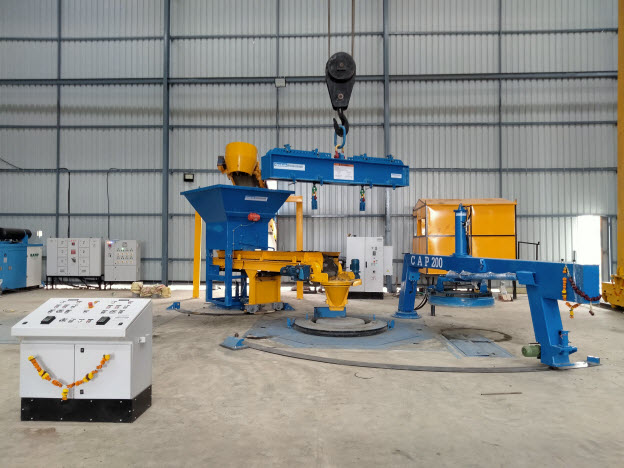
The manufacturing of concrete pipes, crucial for infrastructure such as sewage systems, stormwater drainage, and culverts, is experiencing significant technological advancements. These innovations are shaping the future of concrete pipe making machines, making them more efficient, versatile, and environmentally friendly. This article explores the cutting-edge technologies and emerging trends that are set to revolutionize the concrete pipe making industry.
Advanced Technology in Concrete Pipe Making Machines
Automation and Robotics Modern concrete pipe making machines are increasingly incorporating automation and robotics. Automation enhances precision in the production process, reducing human error and increasing consistency in the quality of the pipes. Robotic arms are used for tasks such as handling heavy materials, precise positioning of reinforcement, and intricate welding, which not only speeds up production but also improves worker safety by reducing the need for direct human handling of heavy components.
Computer-Aided Design (CAD) and Manufacturing (CAM) The integration of CAD and CAM technologies allows for precise design and seamless execution of pipe specifications. These tools enable manufacturers to simulate and analyze pipe designs before they are physically produced, ensuring optimal material use and structural integrity. CAD and CAM also facilitate customization, allowing for the production of pipes that meet specific project requirements without significant additional costs or lead times.
Advanced Materials and Composites The use of advanced materials and composites in machine components is becoming more common. These materials are not only lighter and more durable than traditional metals but also resistant to corrosion and wear, which extends the lifespan of the machines and reduces maintenance needs. Furthermore, the use of sustainable materials and recycled components aligns with global environmental initiatives to reduce the carbon footprint of industrial operations.
Future Trends in Concrete Pipe Making Machine Design

Internet of Things (IoT) Integration The future of concrete pipe making machines is closely tied to the IoT, allowing for better connectivity and data exchange between machines on the production floor. IoT enables real-time monitoring of machine performance and maintenance needs, significantly reducing downtime. Additionally, IoT integration facilitates the optimization of production schedules based on predictive analytics, further enhancing operational efficiency.
Machine Learning and AI Machine learning and artificial intelligence (AI) are starting to play a more significant role in the manufacturing of concrete pipes. These technologies can predict potential issues in the production line before they become problematic, suggest optimizations for energy consumption, and improve the overall quality of the pipes produced. AI-driven systems can also adjust machine settings in real-time based on environmental changes or material variances, ensuring consistent product quality.
Green Manufacturing Techniques Sustainability is increasingly becoming a focus in the design of concrete pipe making machines. Techniques that reduce waste and energy consumption are being prioritized. This includes the recovery and recycling of water used in the production process, as well as the use of renewable energy sources to power the machines. Manufacturers are also exploring the production of eco-friendly concrete pipes that use recycled materials or alternative cements that emit less CO2.
Enhanced Quality Control Systems Future concrete pipe making machines will likely incorporate more advanced sensors and diagnostic tools to enhance quality control. These systems can detect inconsistencies in the pipe during manufacturing, such as variations in density or composition, allowing for immediate corrections. This not only ensures a higher-quality product but also reduces waste resulting from defective pipes.
Conclusion
The concrete pipe making industry is on the brink of a technological revolution, driven by advancements in automation, materials science, digital technologies, and sustainable practices. As these technologies continue to evolve and integrate, they promise to deliver machines that are not only more efficient and cost-effective but also capable of producing higher quality, more sustainable concrete products. This progress is crucial for meeting the growing global demand for durable and environmentally friendly infrastructure solutions.
Recent Articles
- How Drycast Technology is Changing the Concrete Pipe Industry?
- Common Mistakes to Avoid When Selecting Pipe Moulds for Your Machine
- How to Match Your Concrete Pipe Making Machine with the Perfect Drycast Mould?
- How to Keep Concrete Pipe Machine and Drycast Moulds in Top Condition? Maintenance Guide
- Box Pallets & U-Drain Pallets: Essential Components in Modern Drainage Systems





 BACK TO ARTICLES
BACK TO ARTICLES